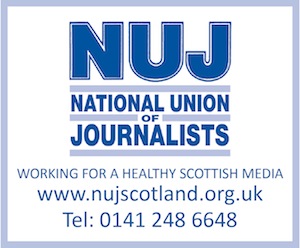FOLLOWING the recent unrest on the streets of London there has been a lot of hand-wringing by both Press and politicians concerning the role that social media played in orchestrating those shocking scenes of looting and violence. But social media is no different from any other medium in the way it can be used to promote negative, as well as positive, behaviours.
While there is no doubt that Blackberry’s instant messenger service was used, in part, to keep some rioters informed of police movements and rallying points, the wider concerns expressed about social media, and especially calls from some politicians and newspapers for powers to shut down networks during times of crisis, seemed like not only a not-terribly-well-thought-through knee-jerk reaction but also somewhat hypocritical when these same social networks were so recently lauded for their role in the Arab Spring uprisings.
At the same time that a minority of criminals were organising themselves using social media, plenty of law-abiding citizens were reporting from the scene. Indeed, social media played a critical role for many in keeping them informed with up-to-the-minute information about where and how to avoid trouble flashpoints. Many of the first reports and images re-broadcast on television and via many newspaper’s online presence came in the first instance from citizen journalists on the ground using Twitter and Facebook to give their impressions of the situation.
Not only that but the vast majority of comments recorded on social media sites demonstrated that these events were not reflective of a wider sense of dissent amongst the wider public but were the acts of the disenfranchised few.
While the Blackberry Messenger service was being used to organise and communicate amongst the rioters due to its ability to allow anonymous, decentralised communication within discrete groups, the rest of the online nation watched through Twitter and Facebook and expressed their disbelief, fear then anger that these events were taking place.
Better still, social media showed just how much of a force for good it can be as the #riotcleanup effect took over. Hundreds, then thousands of Londoners, and those in other affected cities, organised themselves spontaneously through Twitter and Facebook to clean up the mess left behind days before the authorities began to mobilise anything beyond an increased police presence.
The sense of social belonging and community empowerment was palpable even from this far remove. And it became even more heart-warming still to see campaigns set up by local communities to help those innocent local shopkeepers affected by the riots, eg http://keepaaroncutting.blogspot.com/ and http://www.helpsiva.com/.
Social media even helped police catch and convict looters and rioters through sites like http://catchalooter.com/.
So, what can we learn from all this?
Well, firstly that technology is only technology. It is neither inherently good nor bad. Social media merely has the power to amplify those positive or negative tendencies already evident in society.
Social media didn’t create the riots but it did have a role in both the negative, but I would say overwhelmingly, in the positive response of Londoners to the events in their city.
The organisation of the riot cleanup clearly demonstrated the power of self-organising communities.
Companies should take note and those who can align their core values with those of emerging social causes could clearly reap the benefits of facilitating positive community action.
Murray Calder is a director of Edinburgh-based media planning agency, MediaCom. He is also chair of IPA Scotland.





